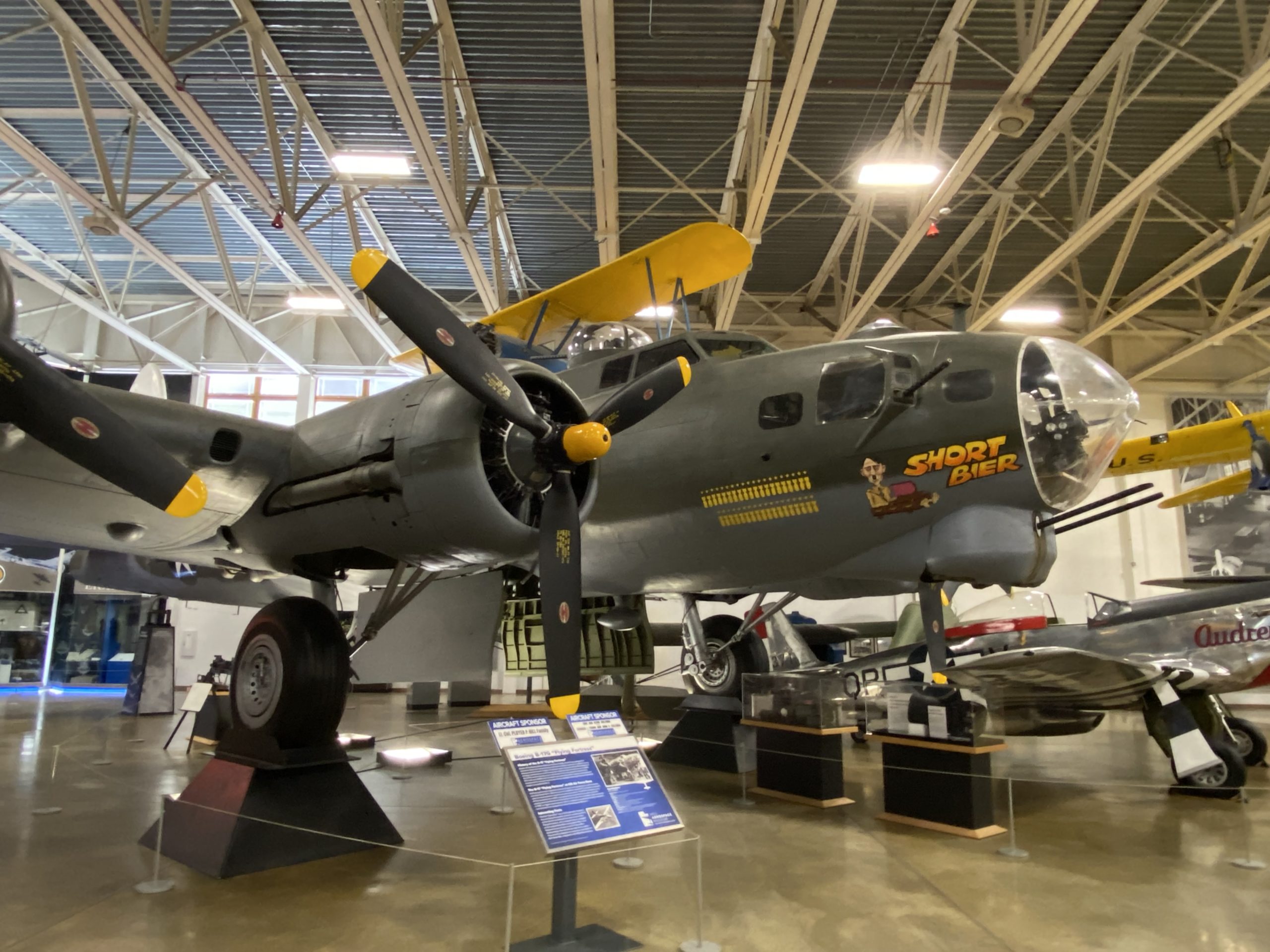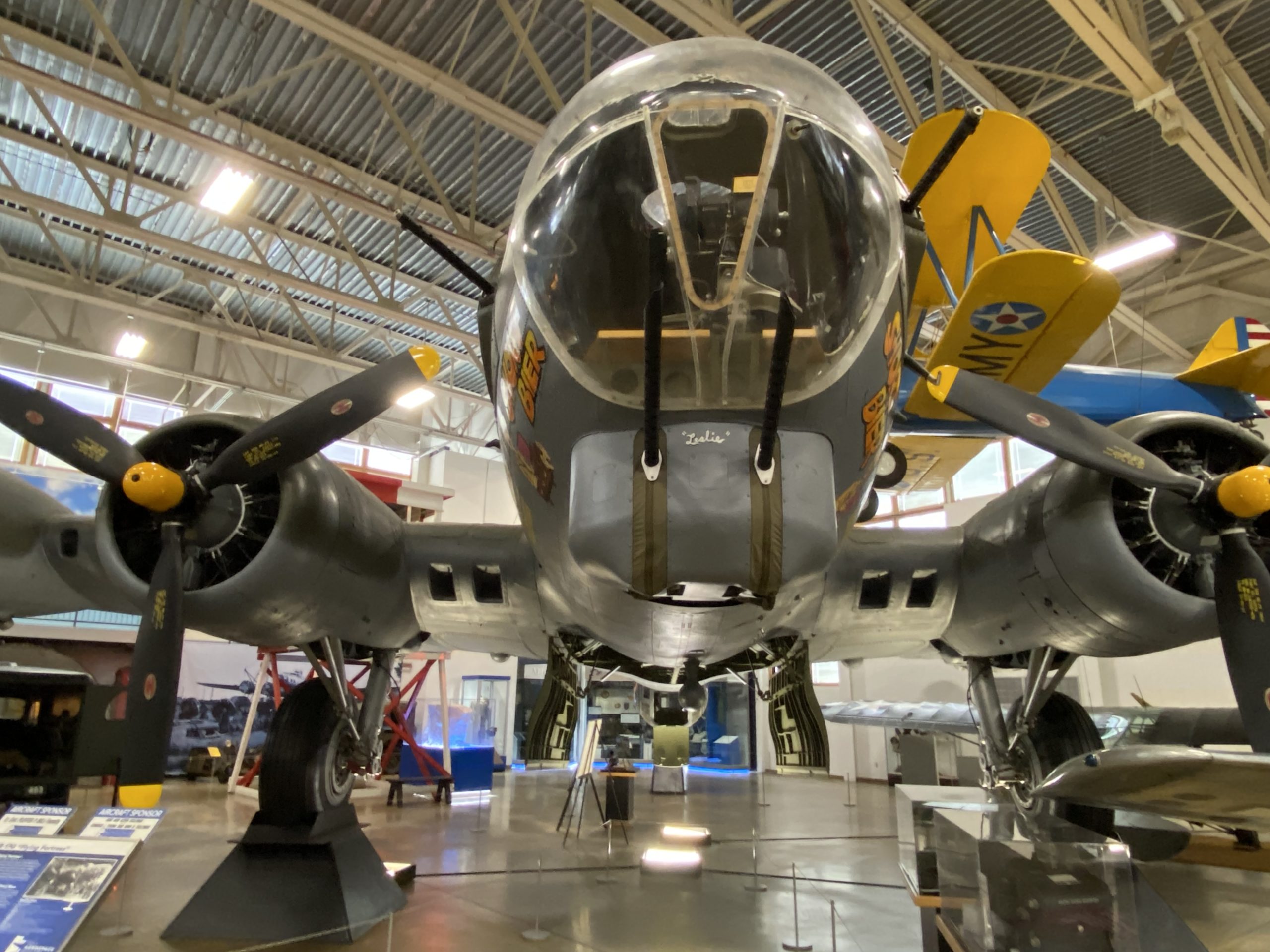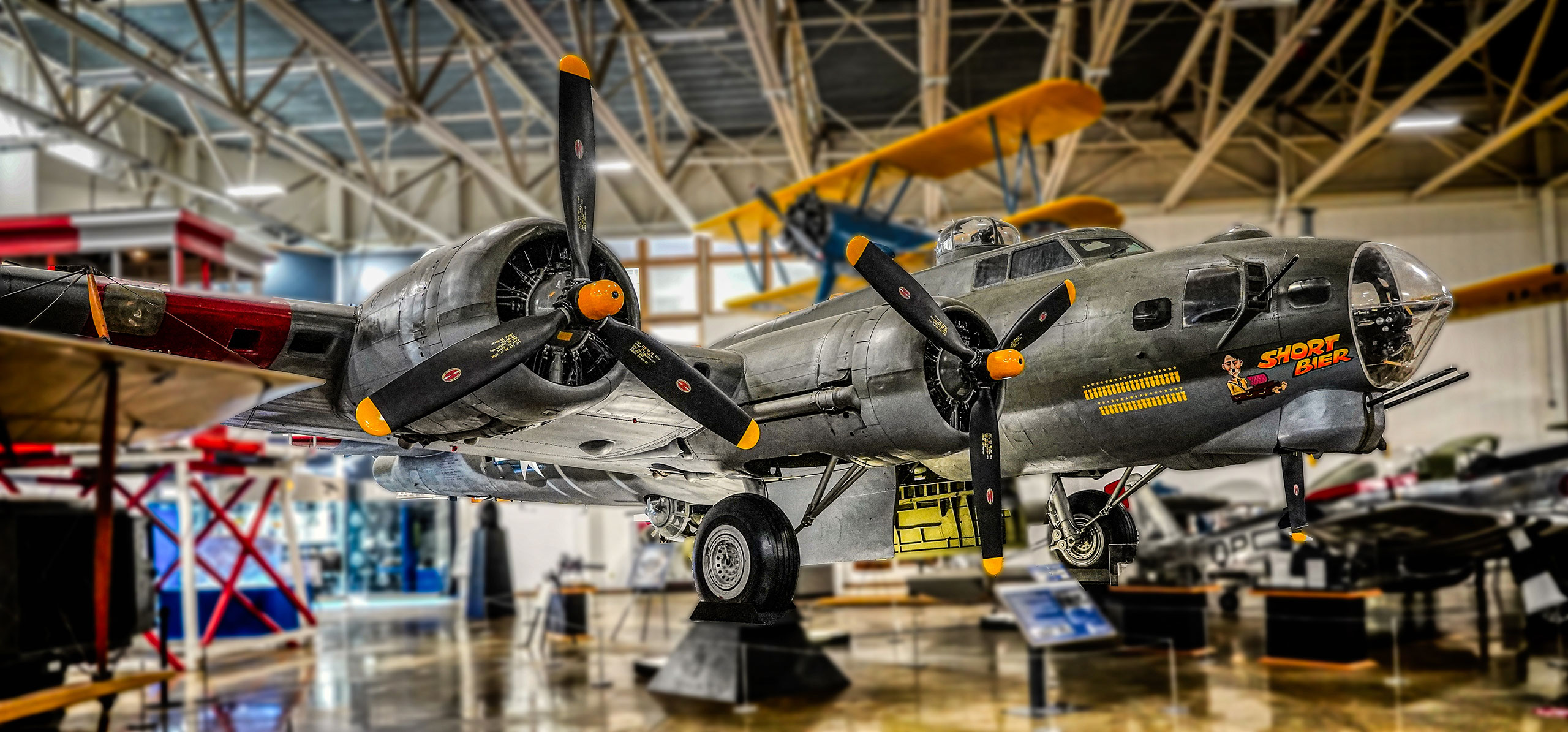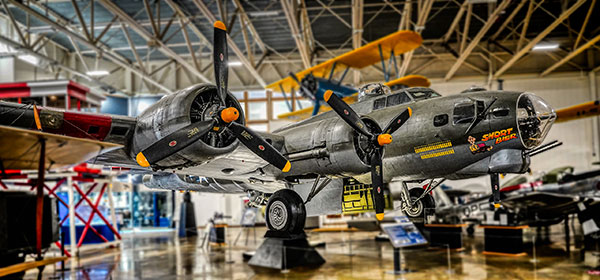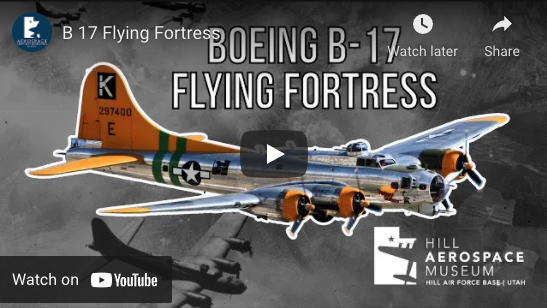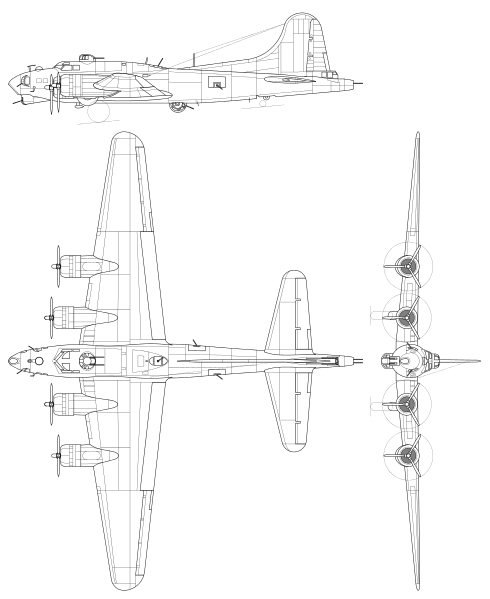
Boeing B-17G-90-DL
"Flying Fortress"
Serial Number: 44-83663
Manufacturer: Boeing
Crew: Ten
Engines: Four Wright Cyclone R-1820-97 radial; 1,200 horsepower each
Wingspan: 103 feet 9 3/8 inches
Length: 74 feet 4 inches
Height: 19 feet 3 inches
Weight: 36,135 pounds (empty); 72,000 pounds (maximum)
Speed: 182 mph (cruising); 287 mph (maximum)
Range: 2,000 miles (normal); 3,750 miles (maximum)
Service Ceiling: 35,600 feet
Armament: Thirteen .50-caliber machine guns; up to 17,600 pounds of bombs in internal bomb bay and external racks; normal bomb load: 4,000 pounds
Cost: $204,370 (average B-17 unit cost in 1944)

